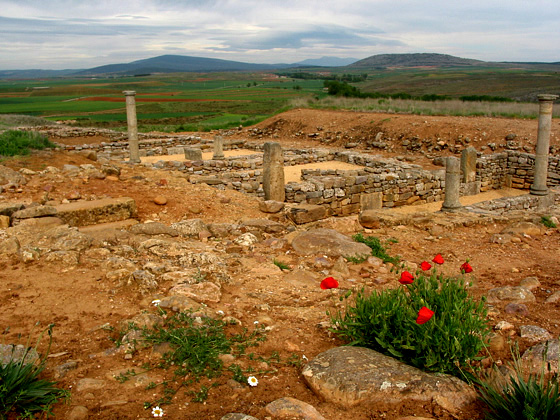

"All glory to a brave city, a city blessed, so it seems to me, even in its misfortunes; for it loyally helped its allies and with so small a force withstood for so long a period a people which was supported by the resources of the whole world."
Florus, Epitome of Roman History (I.34.16)
The defeat of Numantia in 133 BC marked the end of organized resistance in Spain. Scipio, surnamed "Africanus" (Minor) because of his earlier victory over Carthage, came also to be known as "Numantinus." As to why Scipio destroyed the stronghold of Numantia, which had been a symbol of Celtiberian autonomy for so long, Appian muses that perhaps it was because "he thought that great calamities are the foundation of great glory."
The ruins still visible at Numantia are those of the later Ibero-Roman town, which was built over the original native settlement. Artifacts from the site, especially decorated Celtiberian pottery, are to be found in the Museo Numantino in Soria (the originals of several bronzes are in the Museo Arqueológico Nacional in Madrid).
References: Appian's Roman History (Vol I: The Wars in Spain) (1912) translated by Horace White (Loeb Classical Library); Lucius Annaeus Florus: Epitome of Roman History (1929) translated by Edward Seymour Forster (Loeb Classical Library).